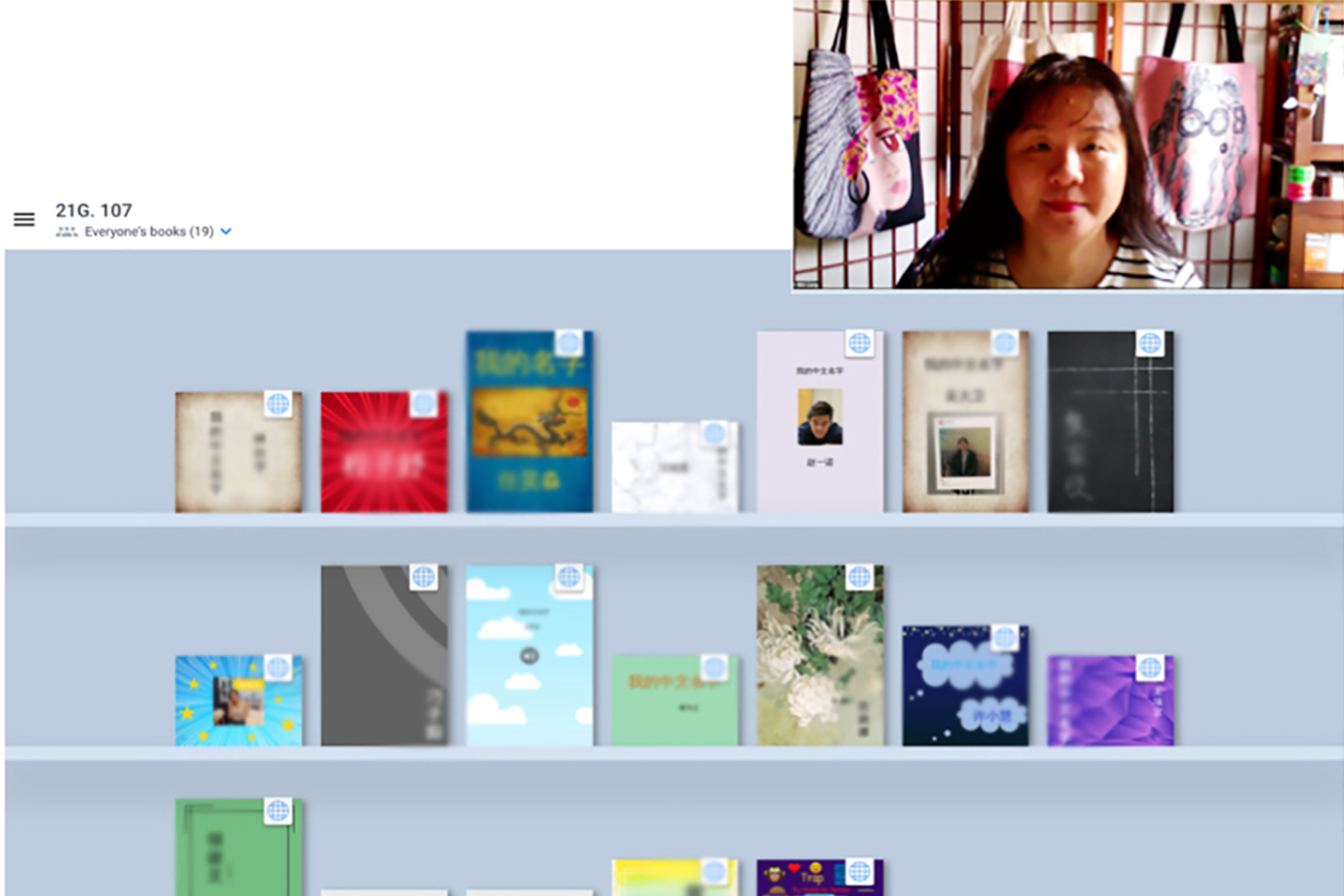
Chinese streamlined I is the first semester of the streamlined sequence which is designed for students who have some basic conversational skills (gained, typically, from growing up in a Chinese speaking environment), but who lack a corresponding level of literacy. Many students enter the class without writing and reading skills.
Once students have gained some reading and writing skills, I want them to learn about their names in Chinese. A Chinese name represents a family’s pride, roots, and cultural identity. Knowing their names is the first step for students to expand their knowledge of their heritage. The project is relevant and meaningful to heritage learners.
Remote (online) teaching presents both challenges and opportunities. How can I take advantage of this setting? How do I use the class time efficiently? How can I utilize the class time effectively for discussions and peer interactions?
I decided to ask students to write a book of their Chinese names! The learning objectives of this project are:
- I can describe the origin of my family name in Chinese.
- I can write my name in characters.
- I can explain the meanings of my name and tell a story about my name in Chinese.
- I can teach others how to write my name in characters.
- I can learn new vocabulary related to my name.
- I can read some of the information in Chinese from online resources.
- I can give a thoughtful feedback to my classmate’s book.
The project also fulfills ACTFL standards of Communication Modes, Presentational mode (speaking and writing), Interpretive mode (listening, reading online research), and Interpersonal mode (speaking and listening).
I adopted a powerful tool, Book Creator, for students to write their books. Students received detailed instructions on what to include. Within this framework, I also provided them space to be creative. Students were asked to write their book texts and also record their own voice reading their texts. They were invited to decorate their books with pictures and images. Students were asked to list the new vocabulary related to their names, which allowed readers to both read and listen to the texts. Students told stories about their names and also taught readers how to write their names, stroke by stroke. After posting their own books, students were asked to read the books of two other students and give a three-minute audio response. Then, in class, students were paired up. Students were asked to tell their partners what books they read and what they thought about the books. In this way, students were exposed to more books written by classmates. This activity let students practice both speaking and listening skills.
After the project, I asked students to fill out an “exit card” about this project. Students commented on how proud they are about their names and how fun to learn about other classmates’ names. Some even said that they felt very “cool” to speak Chinese to their parents for finding out information about their names, not just the meanings but also the reasons. Parents were happy to share that knowledge with them. Apparently they don’t seem to speak a lot Chinese to each other at home. I am so glad to know that this project helped students to connect with their parents in a different level. The best part of the project is that they can share their cultural artifacts with their family and friends. They are very proud of their creations.
—-
Min-Min Liang has been a Chinese language instructor in Global Languages at MITsince 2000. She graduated from National Taiwan University in Taiwan with a bachelor’s degree in Chinese Literature. She received a master’s degree in Chinese Literature from Harvard University.
